In 2023, there was a group who thought that the Biden admin (with the passage of the IRA) could direct large portions of IRA funding to ensure a Red State clean energy economy with IRA-funded projects, and in exchange, enlighten hearts and minds. The flow of IRA funds into targeted and local investments in southern states held the promise for some to change minds (for the better), thus turning Red states into several shades of Green.
 Considering the short window of opportunity for change the IRA offered, Democrats gambled this would all work in their favor come the next election cycle and validate what some saw as wishful thinking, and not the political reality of the moment. Directing IRA funds into Red states only diluted the IRA’s narrow window of opportunity in transitioning the nation off its costly fossil fuel dependency and the geopolitical reality.
Considering the short window of opportunity for change the IRA offered, Democrats gambled this would all work in their favor come the next election cycle and validate what some saw as wishful thinking, and not the political reality of the moment. Directing IRA funds into Red states only diluted the IRA’s narrow window of opportunity in transitioning the nation off its costly fossil fuel dependency and the geopolitical reality.
At the time some of us saw the red state strategy to be wishful policy thinking, its reasoning was flawed from the get-go. An earlier New York Times article; “In Georgia, Republicans Vote to Kill Green Jobs and Face Little Fallout” offers a case-in-point that validates this concern, with a Georgia solar recycling company’s plan (Solarcycle) to hire 1,200 people upended by Republicans in Congress.
Trump’s “big, beautiful” bill has stopped the Solarcycle factory in its tracks. The legislation, which passed the GOP-controlled House this past week and is now being debated in the GOP-controlled Senate, and would essentially eliminate the essential tax breaks that companies have been planning and counting on to build new wind and solar projects, electric vehicle battery factories and more. Republicans in the House voted to get rid of the clean energy subsidies in order to pay for Mr. Trump’s billionaire-targeted income tax breaks, even if it meant hurting investments in their own districts.
In its current form, the Trump party bill would abruptly end most of the Biden-era bipartisan federal tax credits for zero-to-low carbon sources of electricity like wind, solar, batteries, and geothermal. Repealing those clean energy credits could increase the average family’s energy bill by as much as $400 per year within a decade, according to several studies published this year.
It’s sad (and alarming) to see the IRA, a once-in-a-lifetime opportunity as a national clean energy enabler to see its essential public policy mission abruptly ended without merit or reason, but not unexpectedly. The IRA’s mission is being disrupted and corrupted by Trump Inc., as this case-in-point story illustrates.
A Lost Opportunity
Looking back, IRA money should have been funneled into blue and purple states (especially California with its massive economy, this clean energy market leader is qualified to be an economic driver likely to produce a much greater ROI result in the nation’s investment towards an economic win, and certainly more than many other states less experienced in clean energy projects and deployment.
Certainly, IRA investments in CA (representing the 4th largest economy in the world) is a much better national catalyst and strategy in leading the nation into a clean and self-sufficient energy economy, than expecting to seduce and otherwise convert Red States with IRA funds, no matter how reasonable that may have sounded at the time to some political pundits and strategists. However, changing embedded cultural beliefs extending back to the Civil War, and placing Big Oil in its place and no longer in the nation’s driver’s seat on energy policy, is indeed a wishful political strategy. In this case, it was the loss of a once in a lifetime national opportunity to transition America into a clean and sustainable energy economy, and a proactive national climate policy represented best by the Inflation Reduction Act (aka clean energy initiative).
 No doubt, President Trump (the oil-gas-coal guy) and the money interests funding him are seeing their wildest dreams come true, in part defined by the Project 2025 playbook and their complete control over Congress. Their eyes, however, are shut to clean energy opportunities, instead they are focused on business-as-usual as the world is rapidly changing. Closed to the costly present and future consequences of continuing to burn fossil fuels like there is no tomorrow, the question is no longer who is paying for the climate bill, but how much and when.
No doubt, President Trump (the oil-gas-coal guy) and the money interests funding him are seeing their wildest dreams come true, in part defined by the Project 2025 playbook and their complete control over Congress. Their eyes, however, are shut to clean energy opportunities, instead they are focused on business-as-usual as the world is rapidly changing. Closed to the costly present and future consequences of continuing to burn fossil fuels like there is no tomorrow, the question is no longer who is paying for the climate bill, but how much and when.
A united and strengthened blue and purple state clean energy economy, especially one driven by science and supported by sustainable and equitable policies is needed now more than ever, as each minute on the climate clock clicks down to zero hour. The unfilled promise of the Inflation Reduction Act (IRA) and its enabling transition of the nation into a clean energy economy may no longer worry or threaten energy interests invested in the deep and dirty energy past, especially when the GOP controlled Senate concludes its business on the subject this week.
Sustainable energy technologies, and the cost-effective economics they offer consumers and society overall (politics aside) a proven pathway forward in an increasingly hotter world. But, this all still comes down to the question of how best to mitigate rising climate costs, impacting everyone, regardless of wealth or who we vote for to solve our national and global problems.
Altogether, the IRA was designed to enable a clean and sustainable energy economy, and so far it has been successful as national policy; advancing reliable, compatible, and sustainable clean energy options in balance with consumers’ pocketbooks and the planet.
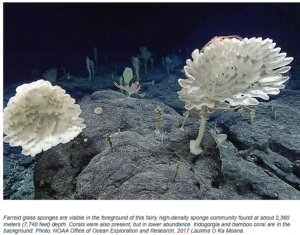 The decision from judge Micah WJ Smith overturns an April letter released by the National Marine Fisheries Service’s (NMFS) – also known as National Oceanic and Atmospheric Administration (Noaa) Fisheries – that allowed fishing in parts of the monument that Barack Obama had protected during his presidency. The letter came about a week after Trump’s presidential proclamation to reverse the national monument’s marine protections and fishing regulations across the national monument, a world heritage site that includes archeological treasures, marine mammals, seabirds and coral reefs.
The decision from judge Micah WJ Smith overturns an April letter released by the National Marine Fisheries Service’s (NMFS) – also known as National Oceanic and Atmospheric Administration (Noaa) Fisheries – that allowed fishing in parts of the monument that Barack Obama had protected during his presidency. The letter came about a week after Trump’s presidential proclamation to reverse the national monument’s marine protections and fishing regulations across the national monument, a world heritage site that includes archeological treasures, marine mammals, seabirds and coral reefs.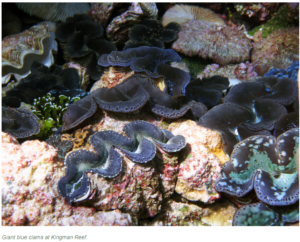



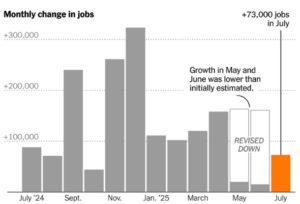

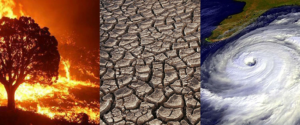
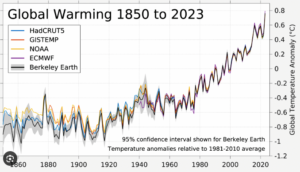

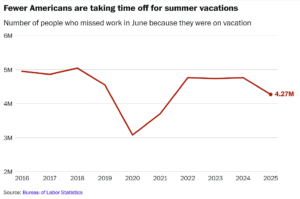 Americans are downsizing their summer vacations — taking shorter trips, driving instead of flying, and generally staying closer to home in an uncertain economy. This recent pull back in leisure travel is one several economic side effects of the current administration’s chaotic management of national priorities, from rollercoaster tariffs to all other things economic
Americans are downsizing their summer vacations — taking shorter trips, driving instead of flying, and generally staying closer to home in an uncertain economy. This recent pull back in leisure travel is one several economic side effects of the current administration’s chaotic management of national priorities, from rollercoaster tariffs to all other things economic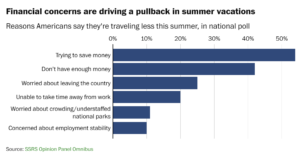 Airline Travel Outlook
Airline Travel Outlook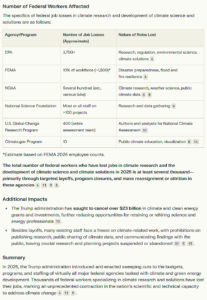

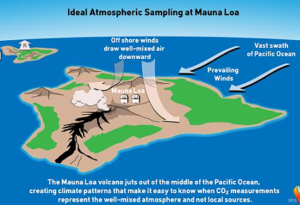 Why Mauna Loa?
Why Mauna Loa?

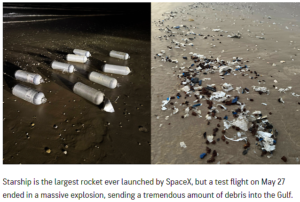
 Considering the short window of opportunity for change the IRA offered, Democrats gambled this would all work in their favor come the next election cycle and validate what some saw as wishful thinking, and not the political reality of the moment. Directing IRA funds into Red states only diluted the IRA’s narrow window of opportunity in transitioning the nation off its costly fossil fuel dependency and the geopolitical reality.
Considering the short window of opportunity for change the IRA offered, Democrats gambled this would all work in their favor come the next election cycle and validate what some saw as wishful thinking, and not the political reality of the moment. Directing IRA funds into Red states only diluted the IRA’s narrow window of opportunity in transitioning the nation off its costly fossil fuel dependency and the geopolitical reality. No doubt, President Trump (the oil-gas-coal guy) and the money interests funding him are seeing their wildest dreams come true, in part defined by the Project 2025 playbook and their complete control over Congress. Their eyes, however, are shut to clean energy opportunities, instead they are focused on business-as-usual as the world is rapidly changing. Closed to the costly present and future consequences of continuing to burn fossil fuels like there is no tomorrow, the question is no longer who is paying for the climate bill, but how much and when.
No doubt, President Trump (the oil-gas-coal guy) and the money interests funding him are seeing their wildest dreams come true, in part defined by the Project 2025 playbook and their complete control over Congress. Their eyes, however, are shut to clean energy opportunities, instead they are focused on business-as-usual as the world is rapidly changing. Closed to the costly present and future consequences of continuing to burn fossil fuels like there is no tomorrow, the question is no longer who is paying for the climate bill, but how much and when.


 The report’s projections are based on data compiled in a recently released NOAA-led interagency report. The study, published in Nature, combines data from 230 regional estimates and confirms that human-caused atmospheric warming is driving a rapid glacier retreat and corresponding sea level rise and expansion through rising global temperatures.
The report’s projections are based on data compiled in a recently released NOAA-led interagency report. The study, published in Nature, combines data from 230 regional estimates and confirms that human-caused atmospheric warming is driving a rapid glacier retreat and corresponding sea level rise and expansion through rising global temperatures.  The global glacier meltdown now underway feeds not only sea levels, but glaciers also serve as a freshwater reservoirs for millions of people, buffering against droughts and sustaining ecosystems. The glacier meltdown further threatens the disappearance of vital water supplies, increases sea level rise, and thereby the risk of coastal flooding. Even small rises in sea level can displace millions, exacerbating climate migration and economic instability.
The global glacier meltdown now underway feeds not only sea levels, but glaciers also serve as a freshwater reservoirs for millions of people, buffering against droughts and sustaining ecosystems. The glacier meltdown further threatens the disappearance of vital water supplies, increases sea level rise, and thereby the risk of coastal flooding. Even small rises in sea level can displace millions, exacerbating climate migration and economic instability. As glaciers and ice sheets melt and seawater expands due to rising temperatures, coastal cities face increasing threats from flooding, erosion, and extreme weather.
As glaciers and ice sheets melt and seawater expands due to rising temperatures, coastal cities face increasing threats from flooding, erosion, and extreme weather.